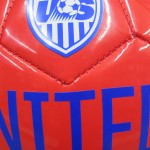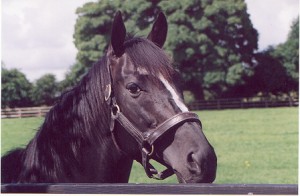KN, p. 110 “Death at the Soccer Pitch”
Warning: part of this post may be too intense for some readers.
In soccer, the ‘pitch’ is the field upon which the game is played. The USA, Canada, and Australia call it soccer. To most of the rest of the world, the sport is called football.
Soccer is the most popular sport in the world. Period. Second place? Cricket.
Over 710 million people worldwide watched the final match held in Germany in 2010. We tried to get tickets for at least one of the weeks of the month-long finals that year, but by the time we could make travel plans, we discovered that they had been sold out for over a year. This year’s finals will be held in Brazil, beginning on June 12th and ending a month later in July.
The World Cup Finals are held every four years, with over 200 teams from around the world competing for more than two years to narrow the field to the 32 teams that reach the Finals. The level of play during the competition is amazing, with headers and kicks and jaw-dropping goals that look physically impossible to make.
The team and fan rivalry is enthusiastic and can sometimes be intense. Sometimes, fans get so caught up in the moment that they lose all sense of reason if a call goes against their favorite player or team.
In 2013, a referee expelled a player from a game, a fight broke out and the referee in Brazil mortally stabbed the player. When friends and family of the player found out that he had died on the way to the hospital, they charged onto the field and stoned the ref to death. Then they quartered his body. They took his head and put it on a pike in the middle of the field. That’s not a typo, folks.
Just about a month ago, some fans were so annoyed by play at a match that they started tossing toilet bowls at the opposition fans. Yup, ripped out the plumbing and threw it, killing someone in the process.
Law enforcement agencies and fans of the sport have been working for several years to reduce the number of incidents, occasionally emptying stadiums before a match is finished so that a game can be completed without further harm coming to players or refs or the fans themselves. Serious scrutiny of various underlying causes for the riots, crowd mentality, and sometimes criminal behavior has even caused a change in how the games are played and/or policed.
http://www.sirc.org/publik/fvexec.html
I love the sport, and even played on the varsity soccer team when I was a kid, so I am not knocking the pure beauty of the game. People just get carried away from time to time, forgetting that it is in fact, just a game we play for exercise, sport and/or entertainment. Many of the top players in the world, in this pre-World Cup week, have said in interviews that they want to provide great entertainment for the fans. Of course they also want to win, but hooligans are not invited to the show.
We won’t be in Brazil this month, so we’ll have to be happy catching a match or two on TV. Plus, I have my ’94 World Cup t-shirt to wear whenever the USA plays. 😉
If you are lucky enough to watch some of the matches in person, here are some tips to remain safe and happy while you’re there. They work for any large sporting event, not just the World Cup.
- If they are demonstrating against the World Cup, stay away from the protest.
. - If you want to take pictures of people, make sure to ask first.
. - Leave your valuable jewelry at home.
.
- Take a taxi or walk with a group or a trusted guide.
. - Do not flash around your cash, iphone, ipad and/or cameras. You can use them, but then, cover them up.
… - Don’t take your valuables to the beach.
. - Drink bottled water.
.. - Don’t get drunk, but if you’re going out, don’t bring your credit card and smartphone with you. Take some cash, bring the address from the hotel, and a copy of your passport.
.
Stay safe and have loads of fun watching the best soccer players in the world compete.
*Photos by Patti Phillips
KN, p. 110 “Death at the Soccer Pitch” Read More »











